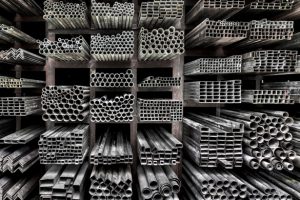Gravity May be Reasserting Itself in China’s Aluminum Smelter Sector
In an effort to curb horrendous atmospheric pollution, particularly during the winter heating season, Beijing’s crackdown on energy-intensive and polluting industries resulted in widespread closures across the Chinese aluminum smelting industry.
Buying Aluminum in 2018? Download MetalMiner’s free annual price outlook
But even as expectations rise that those smelters from Shandong to Shanxi may soon restart, Reuters reports record stockpiles on the SHFE and prices that are down some 10% since last December will weigh heavily on smelters’ decision-making.
Many are already barely profitable and, contrary to expectations six months ago, national Chinese aluminum production has continued running at a high level. December’s output rose to the same level as June when countrywide smelters had been running at capacity to stockpile before the expected clampdown.
The irony is that while Beijing has clamped down on production in some regions closer to major urban areas, producers — many of them state-owned — have been free to build new, lower-cost capacity out in the provinces. Reuters quotes Paul Adkins, managing director of the consultancy AZ China, who estimates that 4.4 million metric tons of new capacity would be completed this year, mostly from state-run companies.
Despite new capacity being based on lower-cost coal and/or alumina supplies, there are question marks whether all this 4.4 million tons will make it to full capacity.
Adkins believes the actual increase may only be some 3 million tons. Even so, incremental increases will be at a cost base lower than older plants and will allow them to operate a break-even price below established plants. If prices remain weak, and the overcapacity issue suggests there is little prospect of a significant rise, then there will be a further shift of production to the state sector, as these new, largely state-owned plants thrive while older, more costly plants struggle.
Want to see an Aluminum Price forecast? Take a free trial!
Primary metal is restrained from directly impacting the global market by 15% export taxes, but limitations on extrusions, rolled products and forgings are less constrained (in some cases supported with rebates). A lower-priced, amply supplied domestic primary market will enable semi producers to export excess capacity abroad, adding to an already fractious trade situation following the U.S. announcement of its intention to levy a 10% import tariff on semi-finished aluminum products.



Leave a Reply